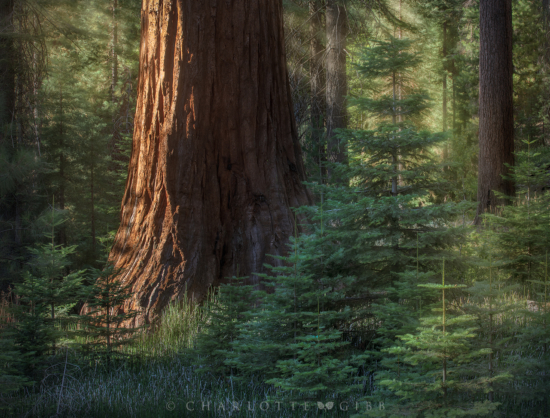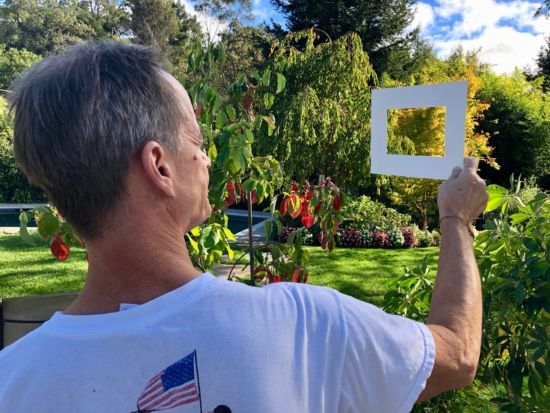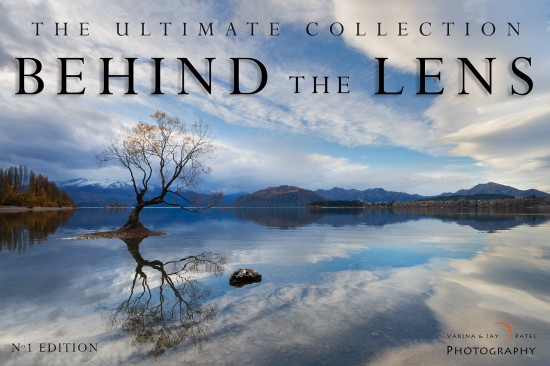Trees are one of my favorite subjects to photograph. Elegant, regal, and colorful — they are as individual as people. However, creating a portrait of a tree or grove of trees that communicates its essence can be a challenge. They are often a tangled mess, with distracting dead wood, or oddly shaped branches. The job of the photographer is to take in all the visual information about the trees, then arrange it into a beautiful composition that reveals its character.
Order from Chaos
In reality, photographing trees is messy business, but it is the complexity itself that makes photographing them particularly rewarding. Here are a few techniques that can be helpful in creating a well-organized composition.
Cut a piece of mat board to the same proportion as your camera’s sensor. Hold it up at an arm’s length and close one eye to view the scene. That is about the equivalent of 120mm on a 35mm camera. Five inches from your face is equivalent to about 24mm, and 10 inches away is equivalent to about 50mm. This will allow you to move around freely as you visualize your composition before you even get your camera out of the bag.
Walk around and study the trees from different angles. If you are photographing a group of trees, find a position where the trunks do not overlap. Look for patterns and elements that break up those patterns. Use a long lens to isolate smaller parts of the scene.
Seeing the forest through the trees
Sometimes it helps to step back from a grove of trees in order to make a clean composition. Roads and rivers create wonderful opportunities for space when positioned between you and your subject. Or, get up on a hill where you can look down on the forest. Pick out interesting patterns from your perch.

“Winter’s Fury”, Northern California, Canon 5DsR, Canon 70-200mm ƒ/2.8L lens, ISO 4000, 93mm, ƒ/16, 1/160 sec.
Take your time
Photographing trees cannot be done in a hurry, so allow time to wander and give the task your full concentration. Patience and curiosity are necessary ingredients to make the best tree images. Trees are loaded with individual character. Take the time to get better acquainted with them and your images will be more impactful and engaging.

“Blue and Gold”, Canadian Rockies, Canon 5DsR, Canon 100-400mm ƒ/4-5.6L IS II lens, ISO 800, 120mm, ƒ/13, 1/250 sec.
Choose your light
There are wonderful opportunities to photograph trees in all kinds of light — back light, side light, shade, overcast, moonlight and starlight. But the only kind of light that comes to mind that is not particularly interesting is front light. Front light is when your subject is directly in front of you and the sun is at your back. To add drama, position the sun behind the foliage or to the side of the trees.

“Dogwood and Yosemite Light”, Yosemite National Park, Canon 5DsR, Canon 24-105mm ƒ/5L IS lens, ISO 50, 58mm, ƒ/16, 1.3 sec.
Revisit these old friends every season
Visit your favorite trees during all seasons and times then note how they have changed. Try to tell a visual story about them. Pay attention to how they have changed throughout the year. For example, Dogwoods in Spring have lovely saucer-like flowers dancing on the ends of lateral branches. In the Autumn, those same trees turn vibrant colors of yellow, orange and red.

“Among The Ancients”, Yosemite National Park, Canon 5DsR, Canon 70-200mm ƒ/2.8L lens, ISO 100, 80mm, ƒ/16, .6 sec.
For further reading about technical settings and gear recommendations, see my article on photographing Fall color.
Visual Wilderness https://ift.tt/2E8ZkEq
Sourced by Time Trap Photography sharing the best photography tips, news and tricks throughout the industry. Time Trap Photography is dedicated to freezing those special moments in life that can be revisited and admired for generations to come. - Shannon Bourque
Please visit our main site for booking availability and rates.

Receive valuable industry knowledge delivered free to your email each day.












No comments:
Post a Comment
Thank you so much for your comment. A moderator will review and approve all relevant posts. We appreciate your support and encourage you to stay with us by subscribing to our email updates. Where you can easily pick and choose what photography subjects interests you. Subscription link: http://bit.ly/photo-sub